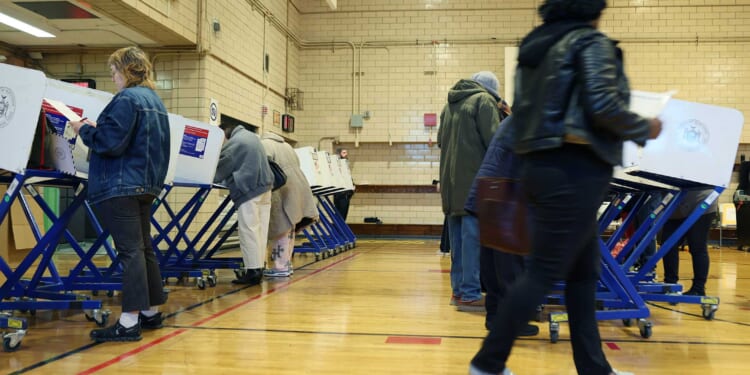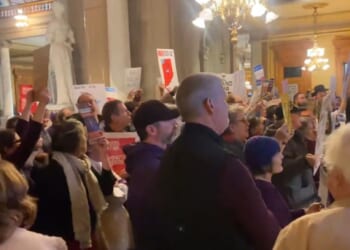
No matter whom they vote for in today’s mayoral election, New Yorkers should hope that the winner—Assemblyman Zohran Mamdani or former governor Andrew Cuomo—gets just enough votes to squeak by. A single-digit margin of victory could be a useful check on the next mayor’s governance approach, and a signal that the winner should govern as if he is on probation rather than the recipient of a universal mandate.
New York isn’t accustomed to close general election races. In the past three races, the city’s six-to-one ratio of Democrats to Republicans ensured that Eric Adams and Bill de Blasio (the latter, twice) beat their Republican opponents by double-digit margins.
Finally, a reason to check your email.
Sign up for our free newsletter today.
The last mayor to win office by a slim margin was Republican and independent candidate Michael R. Bloomberg. In 2001, he won by just 4.5 percentage points over public advocate Mark Green.
That Bloomberg could never take the city’s electorate for granted was an important driver of his pragmatic approach to governing. He had to demonstrate competence, attentiveness, and public-spiritedness to keep voters from defaulting to the Democratic Party.
Though Adams didn’t face a competitive general-election challenger in 2021, he should have heeded a similar lesson from his close primary race. That June, he bested former sanitation commissioner Kathryn Garcia by less than a percentage point.
Adams, a longtime elected official who had held both borough- and state-level offices after serving as an NYPD captain, had the powerful Brooklyn Democratic machine behind him and ran on a solid platform of reducing then-soaring crime back to pre-2020 levels. His narrow victory over a political neophyte who ran a technocratic campaign not focused on any single issue suggested that voters were already uneasy with his checkered history and lack of executive experience.
Instead of reassuring voters by choosing strong deputy mayors and commissioners, Adams abused the public’s trust by initially surrounding himself with untrustworthy characters, such as his initial deputy mayor for public safety, Phil Banks, an unindicted co-conspirator in an earlier city-government pay-to-play corruption scheme, and top advisor Ingrid Lewis-Martin, who currently faces bribery charges related to her discretion over city agency operations. As a result, even after the Trump administration dropped a federal bribery case against him, Adams found his reelection prospects so dismal this year that he dropped out of both the Democratic primary and, after attempting an independent bid, the general election.
Recent polls indicate that Mamdani, the Democratic nominee, will beat Cuomo, who is running an independent race after his double-digit primary loss this June. Mamdani is surely hoping to repeat his 12-point margin from four and a half months ago.
But a closer election—that is, a win of just under or over 50 percent, as moderates split their votes between Cuomo and Republican Curtis Sliwa—would likely make Mamdani a better mayor.
First, it would remind Mamdani that, though voters are worried about affordability, they also remain concerned about crime and disorder. In September, 27 percent of voters said that crime was their top concern, above the 26 percent who chose the cost of living. And for good reason: though murders and shootings have fallen to record lows during the last year of the Adams administration, felony crime remains 27 percent higher than in 2019.
A close win would also tell Mamdani that New Yorkers wouldn’t welcome radical experimentations with public safety, including his plan to remove police officers from the teams of mental-health workers who engage with disturbed people in public. Mamdani already seems to realize that he needs to inch closer to the middle on public safety: he has pledged to ask Jessica Tisch, Adams’s current police commissioner, to stay on. A close race would let Mamdani know he should defer to Tisch’s judgment on some critical matters, including the need for a larger police force and for a continued focus on quality-of-life crimes.
Second, a close race would send a message to Mamdani to trim his economic and fiscal ambitions. The candidate’s affordability suite—a rent freeze on a million apartments, free buses, free childcare from infancy, and city-run grocery stores—would represent the biggest change in economic philosophy New York has ever seen. But polls show that even Mamdani’s supporters are skeptical of this platform. Many are voting for him more for his “fresh face” and charisma than for his ideas.
A close race could spur him to pick just one of these ideas, the most doable, and start there. For instance, he might first ensure that every three-year-old receives a pre-kindergarten spot near his or her home and, only after demonstrating success there, expand the program to include two-year-olds.
Alternatively, if Mamdani doesn’t interpret a close vote as a sign to move slowly, Governor Kathy Hochul could read it as such anyway. Mamdani would need both the governor and the legislature to execute much of his plan—from free buses to higher taxes on businesses and wealthy earners. Hochul could view a low-margin Mamdani victory as a portent that her own race for governor next year will be close, and that she should thus worry more about a challenge from the center than from the left. If New York City hasn’t turned overwhelmingly socialist, then New York State, with its more moderate electorate, certainly hasn’t.
A close vote for Cuomo would make him a better mayor, as well. The former governor suffered his loss in the Democratic primary due in part to complacency. Since the summer, though, he has improved his campaign.
As Vital City’s Josh Greenman points out, Cuomo’s springtime education plan was a sop to the teachers’ union; his fall education plan, by contrast, is sturdier, with a plan to double the number of competitive specialized high schools to meet the high demand for rigorous secondary education. Cuomo also recently unveiled a proposal to rebuild modern jails on Rikers Island instead of continuing with the unworkable de Blasio-era plan for four borough-based jails, the combined capacity of which would fall far short of current and projected numbers of inmates.
If Cuomo somehow wins, he will have done so because his moves toward the middle garnered the votes of more moderate and conservative New Yorkers who chose him over Sliwa. The former governor would have to stay in the middle and deliver quickly on his promises to reduce street and subway disorder—or see that support fray.
But a Mayor Cuomo would also have to acknowledge Mamdani supporters’ frustrations about New York’s high cost of living, particularly on housing. Rather than pushing for a rent freeze like Mamdani is promising, Cuomo could focus on incrementally expanding housing supply. For instance, he could work with the state legislature to encourage landlords to bring thousands of vacant rent-stabilized apartments back onto the market, by allowing them to recoup the investments they would need to make to get them habitable again.
New York is a city of ceaseless competition—economic, generational, and political. Whether it’s Cuomo or Mamdani, the next mayor will do a better job if voters make it clear that they aren’t anointing a person or a movement but are instead making yet another provisional appointment.
Photo by Michael M. Santiago/Getty Images
Source link

















